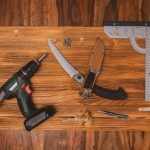Home improvement projects are a common endeavor for homeowners looking to enhance their property. They not only add value to their homes but also provide a sense of satisfaction and personalization. However, before embarking on any home improvement project, it is essential to consider the financial implications, including the potential deductibility of interest expenses related to these renovations.
In this article, we will delve into the topic of home improvement interest deduction and provide clarity on this often confusing area of tax law. We will discuss the difference between home improvement and home repair expenses, explore the tax benefits associated with home improvement interest deductions, and outline the eligibility criteria for qualifying homeowners.
Additionally, we will highlight the maximum deductible amount for home improvement interest and guide readers on how to properly document their expenses to claim these deductions successfully. We will also address any exceptions or exclusions that may apply under specific circumstances and provide expert insights from tax professionals on maximizing this deduction.
Lastly, we will touch upon alternative strategies that homeowners can consider to offset their home improvement costs if they do not qualify for a deduction. By the end of this article, readers will have a comprehensive understanding of whether or not home improvement interest is deductible and gain valuable knowledge on navigating through this complex aspect of tax laws.
Clearing the Confusion
One area of confusion for homeowners when it comes to deducting home improvement expenses is differentiating between home improvement and home repair expenses. While both types of expenses may involve making repairs or improvements to a home, the tax treatment and deductibility can vary.
Home improvement expenses generally refer to any work that adds value to a home or prolongs its useful life. This can include major renovations, such as adding an extra room, updating kitchen appliances, or installing a new heating system.
These expenses are generally considered capital expenditures and are not fully deductible in the year the work was completed. Instead, they are added to the cost basis of the home and may be used to offset any potential gains when the property is sold.
On the other hand, home repair expenses typically involve fixing or maintaining something that is already in place. This can include repairing a leaky roof, fixing a broken window, or repainting walls.
Unlike improvements, most repairs are not considered capital expenditures and are fully deductible in the year they were incurred. However, it’s important to note that if the repair is part of a larger improvement project, such as replacing all windows in a house, then it may be treated as an improvement expense instead.
| Expense Type | Tax Treatment |
|---|---|
| Home Improvement Expenses | Added to cost basis of home; potential offset against gains upon sale |
| Home Repair Expenses | Fully deductible in year incurred (unless part of larger improvement project) |
The Tax Benefits
Homeowners who are considering making improvements to their homes often wonder if the interest on the loans or financing used for these projects is tax deductible. This section will explore the potential tax benefits of deducting home improvement interest.
In general, the tax code allows individuals to deduct the interest paid on loans used for home improvements if certain criteria are met. One key factor is that the improvements must be considered “capital improvements” rather than simple repairs or maintenance. This means that the improvement must substantially add value to the property, prolong its useful life, or adapt it to new uses.
The deduction for home improvement interest falls under the category of itemized deductions and is typically claimed on Schedule A of Form 1040. It is important to note that taxpayers can only claim this deduction if they choose to itemize their deductions instead of taking the standard deduction. Therefore, it is crucial for homeowners to evaluate whether their total itemized deductions exceed the standard deduction amount before deciding whether to claim this deduction.
Additionally, there may be limitations on how much home improvement interest can be deducted. Currently, according to IRS rules, taxpayers can only deduct mortgage interest on up to $750,000 of home acquisition debt.
This means that any loans taken out for home improvements in excess of this amount may not qualify for a full deduction. It is advisable for homeowners to consult with a tax professional or review IRS guidelines regarding specific limits and requirements related to home improvement interest deductions.
Overall, understanding the potential tax benefits associated with deducting home improvement interest can provide financial relief for homeowners embarking on renovation projects. However, it is essential to carefully track expenses and maintain thorough documentation as proof of eligibility for these deductions. Considering all available options and seeking advice from qualified professionals will help individuals maximize their ability to offset home improvement costs through various tax-saving strategies.
Eligibility Criteria
When it comes to claiming deductions for home improvement interest, it’s important to understand the eligibility criteria. Not everyone will qualify for this deduction, and knowing whether you meet the requirements can help you determine if you can take advantage of this tax benefit.
Income Limitations:
One of the primary eligibility criteria for claiming a home improvement interest deduction is meeting certain income limitations. Generally, individuals or households with higher incomes may be subject to phase-outs or complete disqualification from this deduction.
The Internal Revenue Service (IRS) sets income thresholds each year, so it’s crucial to stay updated on any changes. It’s also worth noting that eligibility criteria may differ depending on filing status, such as single, married filing jointly, or head of household.
Primary Residence Requirement:
The home being improved must be your primary residence in order to qualify for the home improvement interest deduction. This means that if the property is a second home or an investment property, you may not be eligible for this deduction. The IRS requires that the home being improved is where you live most of the time and where your main personal belongings are located.
Loan Usage:
Another crucial aspect of eligibility is ensuring that the funds borrowed for home improvements were used specifically for renovation or repair purposes. The IRS requires that the loan proceeds be used to make substantial improvements to your primary residence or improve its value. If any portion of the borrowed funds was used for unrelated expenses like personal vacations or purchasing a vehicle, those expenses would not be eligible for a deduction.
Meeting all these eligibility criteria is essential if you want to benefit from deducting your home improvement interest on your taxes. Failing to meet any one of these requirements could result in disqualification from claiming this deduction and potential penalties from the IRS. It’s always wise to consult with a tax professional before making any assumptions about your eligibility or completing your tax return.
Understand the Limits
The Maximum Deductible Amount Explained
When it comes to deducting home improvement interest, it is important to understand the limits that apply. The maximum deductible amount for home improvement interest depends on several factors, including the type of property and the loan amount.
In general, for most homeowners, the maximum deductible amount is limited to the interest on a home equity loan up to $100,000. This means that if you have taken out a home equity loan specifically for home improvement purposes, you can deduct the interest paid on that loan up to $100,000.
However, it is important to note that this limit applies to both single individuals and married couples filing jointly. So if you are married and filing jointly, the maximum deductible amount is still $100,000, not $200,000.
Exceptions and Special Circumstances
While the general rule is a maximum deductible amount of $100,000 for home improvement interest, there are some exceptions and special circumstances that may apply. For example, if you have used a portion of your loan for other purposes unrelated to home improvements, such as paying off credit card debt or funding a vacation, then the deductible amount would be prorated based on how much of the loan was used for eligible expenses.
Additionally, if you have taken out a larger loan or have multiple loans for different purposes secured by your property (such as a mortgage and a home equity line of credit), it is important to consult with a tax professional to determine how these loans affect your maximum deductible amount.
Monitoring Your Deductions
To effectively claim your deductions and stay within the limits set by the IRS, it is crucial to keep accurate records of all related expenses. This includes keeping track of receipts for materials purchased for home improvements as well as any interest statements received from your lender.
Maintaining detailed documentation will not only help you accurately calculate your potential deductions, but it will also provide evidence in the event of an audit. By staying organized and diligent in documenting your expenses, you can ensure that you are maximizing your deductible amount while staying within the limits set by the IRS.
Documenting Expenses
One of the key aspects of claiming deductions for home improvement expenses is proper documentation. It is important to keep track of receipts and records related to the improvements made to your home. This section will provide valuable information on the importance of documenting expenses and offer guidance on the types of records you should keep.
When it comes to documenting expenses for home improvement deductions, keeping accurate records is crucial. These records not only serve as proof of the expenses claimed but also help in case of any audit by the tax authorities. The following are some important documents and receipts that you should keep as part of your records:
- Receipts for materials and supplies: Make sure to keep receipts for all the materials and supplies purchased for your home improvement project. This includes items such as paint, flooring, fixtures, appliances, etc.
- Contractor invoices: If you hired a contractor or a professional service for your home improvement project, make sure to retain their invoices or bills. These will help establish the cost incurred for labor and services.
- Permits and licenses: In some cases, obtaining permits or licenses may be required for certain types of home improvement projects. Keep copies of these permits or licenses as they can be used to support your claims.
- Before and after photos: Taking photographs of your property before and after the home improvement project can provide visual evidence and support your deductions if needed.
| Document Type | Description |
|---|---|
| Receipts for materials and supplies | Keep all receipts for materials and supplies purchased |
| Contractor invoices | Retain invoices from contractors or professionals hired |
| Permits and licenses | Keep copies of permits or licenses obtained for the project |
| Before and after photos | Take photographs to provide visual evidence of the improvements |
By documenting your expenses properly, you can ensure that you have the necessary evidence to support your home improvement deductions. It is also advisable to keep these records for a minimum of three years from the date you filed your tax return, as this is the timeframe during which an audit may be conducted. Remember, accurate and well-organized documentation can make the process smoother if questions arise regarding your deductions.
Exceptions and Exclusions
While the home improvement interest deduction can provide significant tax benefits for eligible homeowners, it is important to understand that there are certain exceptions and exclusions where this deduction may not be applicable. It is crucial to be aware of these specific instances to avoid any unnecessary confusion or potential penalties when filing taxes. Here are some examples of when home improvement interest may not be deductible:
- Personal Use Portion: If you use a portion of your home for personal purposes, such as a home office or rental property, you will only be allowed to deduct the portion of the interest that is related to the business or rental use. To determine the deductible amount, you must allocate the expenses based on the percentage of space used for business or rental purposes.
- Maintenance and Repairs: While home repairs and maintenance are essential for keeping your property in good condition, they do not qualify as deductible home improvement expenses. Repairs simply restore your property to its original state, while improvements enhance its value or extend its useful life. Only expenses directly related to improvements, such as adding an addition or remodeling a kitchen, would generally be eligible for this deduction.
- Improvements on Rental Properties: If you own rental properties and make improvements on them, these expenses may qualify as deductible if they meet certain criteria. However, there are limitations to consider. The IRS requires landlords to depreciate the cost of improvements over time instead of taking an immediate deduction in most cases.
It is important to consult with a tax professional or utilize tax software when determining whether or not your specific home improvement expenses are eligible for deduction. They can help navigate through any complexities or uncertainties and ensure that accurate documentation and calculations are done properly.
By understanding these exceptions and exclusions regarding the deductibility of home improvement interest, homeowners can effectively plan their projects while maximizing their potential tax savings.
Expert Insights
When it comes to maximizing the home improvement interest deduction, tax professionals offer valuable advice. Here are some expert insights to help you make the most of this tax benefit:
- Consult a Tax Professional: Seeking guidance from a tax professional is crucial in order to navigate the complex rules and regulations surrounding home improvement interest deductions. They can provide personalized advice based on your specific circumstances, ensuring you claim all eligible expenses and deductions.
- Differentiate between Repairs and Improvements: It’s important to understand the difference between repairs and improvements when determining what expenses can qualify for the deduction. According to tax professionals, repairs that maintain the current condition of your home are not deductible, but improvements that enhance the value or extend its life may be eligible.
- Keep Accurate Records: Maintaining detailed records and receipts is essential for claiming the home improvement interest deduction. Tax professionals recommend creating a system for organizing all relevant documents related to your home improvement expenses, such as invoices, contracts, receipts, and proof of payment.
- Claim All Eligible Expenses: Don’t overlook any potential deductions when compiling your expenses. Tax professionals advise homeowners to consider all eligible costs when calculating their deduction, including labor fees, material costs, permits, architectural fees, and even certain energy-efficient upgrades that may qualify for additional credits.
- Be Aware of Exceptions and Exclusions: Understanding specific instances where home improvement interest may not be deductible is critical to avoid any surprises during tax season. For example, if you used a home equity loan or line of credit for non-home improvement purposes like personal expenses or debts consolidation, those interest payments would not be deductible.
Other Tax-Saving Alternatives
When it comes to home improvement projects, the cost can quickly add up. While the potential for a tax deduction on home improvement interest is enticing, there may be other tax-saving alternatives to consider when trying to offset these costs.
One alternative strategy to consider is taking advantage of available energy-efficiency and renewable-energy tax credits. The federal government offers a variety of tax credits for homeowners who make energy-efficient upgrades to their homes.
This includes installing solar panels, geothermal heat pumps, wind turbines, and more. By making these eco-friendly improvements, not only are you reducing your environmental impact, but you may also be able to qualify for valuable tax credits that can help offset the cost of your home improvement project.
Another option to explore is utilizing a home equity line of credit (HELOC). A HELOC allows homeowners to borrow against the equity they have built in their homes. These funds can then be used to finance home improvement projects. The interest paid on a HELOC may be tax-deductible depending on certain criteria. It’s important to consult with a tax professional regarding this strategy and determine if it is beneficial in your specific situation.
Additionally, some state and local governments offer their own tax incentives or grants for certain types of home improvement projects. These programs vary by location and can include property tax credits for energy-efficient upgrades or financial assistance programs for low-income homeowners. Researching what incentives are available in your area could provide additional ways to offset the costs of your home improvement project while potentially enjoying some financial benefits.
While exploring these alternative strategies, it’s crucial to consult with a qualified tax professional who can provide personalized advice based on your unique circumstances. They will have the expertise necessary to navigate through complex tax laws and identify which options will work best for you in offsetting home improvement costs while maximizing any available deductions or credits.
Remember, every situation is different, so working with an expert will ensure that you are taking advantage of all the tax-saving alternatives available to you.
Conclusion
In conclusion, the deductibility of home improvement interest is a complex matter that requires careful consideration and understanding of the tax laws. It is important to differentiate between home improvement expenses and home repair expenses, as only certain types of improvements are eligible for deduction. Additionally, individuals must meet specific criteria in order to qualify for the deduction.
While there are potential tax benefits to be gained from deducting home improvement interest, it is crucial to understand the limits that apply. The maximum deductible amount varies depending on various factors such as the type of property and the loan terms. It is essential to keep thorough documentation of expenses by retaining receipts and records, as these will be necessary in case of an audit or inquiry from the IRS.
It is also important to be aware of exceptions and exclusions that may prevent certain instances of home improvement interest from being deductible. Tax professionals can provide valuable insights and tips on how to maximize the deduction and navigate through complex tax regulations.
Lastly, homeowners should consider exploring alternative strategies to offset home improvement costs. These may include taking advantage of other tax-saving alternatives such as energy-efficient credits or utilizing a home equity loan or line of credit.
Frequently Asked Questions
What home improvements are tax deductible IRS?
Home improvements that are tax deductible according to the IRS can vary depending on specific circumstances and qualifications. In general, most home improvements do not qualify for a direct tax deduction. However, there are some scenarios where certain home improvements may be eligible for tax deductions.
For example, if the improvement is made for medical reasons and is directly related to a medical condition, it may be deductible as a medical expense. Additionally, energy-efficient home improvements like installing solar panels or upgrading insulation may qualify for tax credits rather than deductions.
Do you get a 1098 for a home improvement loan?
A 1098 form is typically issued by lenders to report mortgage interest paid during the year. It is not specifically provided for a home improvement loan unless it meets certain criteria such as being secured by your primary residence and used solely for home improvement purposes.
If you meet these conditions and paid interest on a qualified home improvement loan, you might receive a 1098 form reporting the amount of mortgage interest paid specifically related to the loan.
Is the mortgage interest 100% tax deductible?
Mortgage interest is not always 100% tax deductible. As of 2021, homeowners can generally deduct mortgage interest on their primary residence and one other qualified residence up to specific limits set by the IRS. The Tax Cuts and Jobs Act (TCJA) implemented in 2018 lowered the mortgage interest deduction limit from $1 million to $750,000 of borrowed money for new mortgages taken out after December 15, 2017.
Additionally, there are income limitations that affect how much mortgage interest can be deducted if your income exceeds certain thresholds set by the IRS. It’s important to consult with a tax professional or refer to IRS guidelines to determine the specific deductions you’re eligible for based on your individual circumstances.

I’m thrilled to have you here as a part of the Remodeling Top community. This is where my journey as an architect and remodeling enthusiast intersects with your passion for transforming houses into dream homes.





